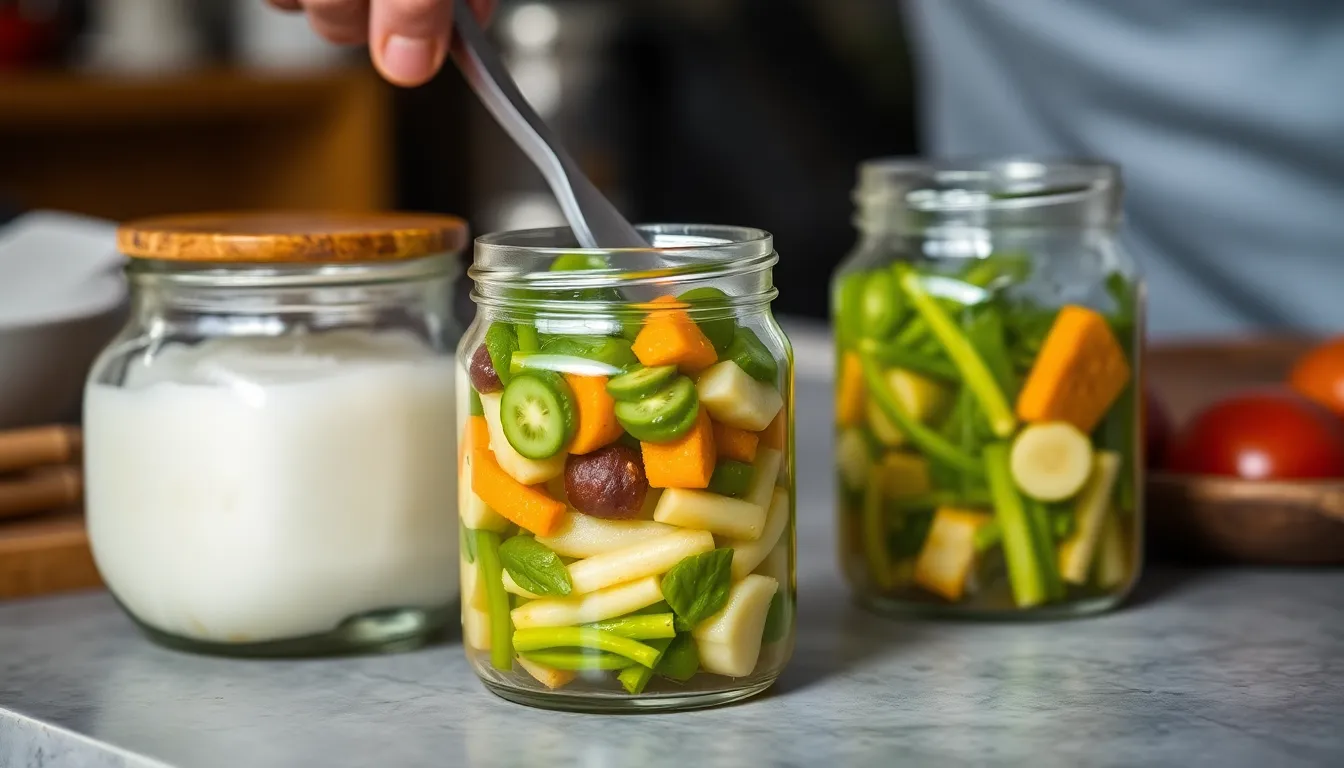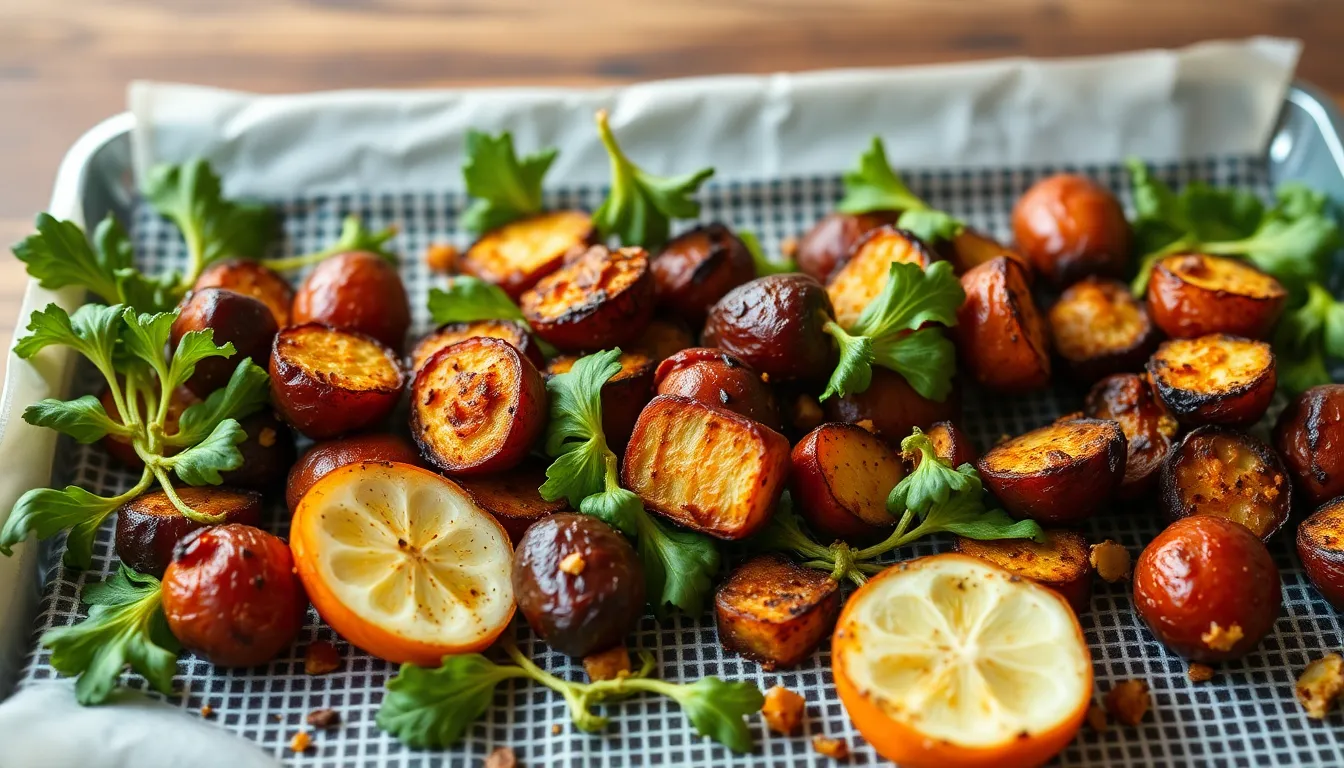The Best Dehydrating Recipes for Family Gatherings
Introduction
Dehydrating food is an age-old preservation method that not only extends the shelf life of fruits, vegetables, and meats but also concentrates their flavors. In today’s fast-paced world, dehydrated foods offer a convenient and nutritious way to enjoy snacks and meals, especially during family gatherings. Imagine having delicious, healthy treats that are easy to prepare and serve, making your time with loved ones even more enjoyable. In this post, we’ll explore the benefits of dehydrating food, essential equipment needed, and a variety of delectable dehydrating recipes that are perfect for any family occasion.
Section 1: What is Dehydrating?
Food dehydrating is the process of removing moisture from food to inhibit bacterial growth and spoilage. This method has been used for centuries across various cultures as a means of preserving food supplies for long periods of time.
Historically, dehydrating was a necessity in many parts of the world, while today it has transformed into a popular cooking method. In addition to preventing spoilage, dehydrated foods are lightweight, making them ideal for camping and hiking.
Health benefits of dehydrated foods include:
- High nutritional density, as nutrients become concentrated
- Reduced waste, as you can use overripe fruits and vegetables
- Lower calories compared to other processed snacks
Section 2: Essential Equipment for Dehydrating
To successfully dehydrate food, certain equipment is necessary. Below is a list of essential items you’ll need:
- Food Dehydrator: The cornerstone of any dehydrating process. Choose one with adjustable temperature settings.
- Trays: Used to hold food while it dries. Ensure they are dishwasher safe.
- Sharp Knife or Mandoline: For slicing fruits and vegetables evenly.
- Storage Containers: Glass jars or vacuum-sealed bags for keeping dehydrated foods fresh.
When selecting a dehydrator, consider the following tips:
- Choose a model with a temperature control feature for versatility.
- Look for one with a fan for better airflow and even drying.
To maintain your dehydrating equipment:
- Regularly clean the trays and dehydrator surfaces with warm soapy water.
- Inspect heating elements and fans for any debris or blockages.
Section 3: Top Dehydrating Recipes for Family Gatherings
3.1 Fruit-Based Recipes
Recipe 1: Apple Chips
Ingredients:
- 4 large apples (any variety)
- 1 teaspoon cinnamon (optional)
- 1 tablespoon lemon juice
Instructions:
- Preheat your dehydrator to 135°F (57°C).
- Wash and core the apples. Slice them thinly (about 1/8 inch thick).
- Dip apple slices in a mixture of lemon juice and water to prevent browning.
- Lay the apple slices on the dehydrator trays, ensuring they do not overlap.
- Sprinkle with cinnamon if desired.
- Dehydrate for 6-8 hours or until crisp.
Recipe 2: Dried Mango Slices
Ingredients:
- 4 ripe mangoes
- 1 tablespoon lime juice
Instructions:
- Peel and pit the mangoes, slicing them into thin strips.
- Sprinkle lime juice over the slices to enhance flavor and prevent browning.
- Arrange the mango slices on dehydrator trays in a single layer.
- Dehydrate at 135°F (57°C) for 8-10 hours or until the slices are leathery.
3.2 Vegetable-Based Recipes
Recipe 3: Zucchini Chips
Ingredients:
- 2 large zucchinis
- 1 tablespoon olive oil
- Salt and pepper to taste
Instructions:
- Preheat the dehydrator to 125°F (52°C).
- Slice zucchinis into thin rounds using a mandoline or sharp knife.
- Toss zucchini slices with olive oil, salt, and pepper.
- Spread the slices evenly on the dehydrator trays.
- Dehydrate for 6-8 hours or until crispy.
Recipe 4: Dehydrated Veggie Mix for Soups
Ingredients:
- 2 cups chopped carrots
- 2 cups chopped celery
- 2 cups chopped onions
- 2 cups chopped bell peppers
Instructions:
- Preheat your dehydrator to 125°F (52°C).
- Chop the vegetables uniformly for even drying.
- Arrange the chopped vegetables on dehydrator trays.
- Dehydrate for 8-10 hours or until fully dried.
- Store in airtight containers for future use in soups and stews.
3.3 Savory Snacks
Recipe 5: Beef Jerky
Ingredients:
- 2 pounds lean beef (like flank or sirloin)
- 1/4 cup soy sauce
- 1 tablespoon Worcestershire sauce
- 1 teaspoon garlic powder
- 1 teaspoon onion powder
- 1 teaspoon black pepper
Instructions:
- Slice the beef into thin strips, against the grain.
- In a bowl, mix soy sauce, Worcestershire sauce, garlic powder, onion powder, and black pepper.
- Marinate the beef strips in the mixture for at least 4 hours or overnight.
- Preheat the dehydrator to 160°F (71°C).
- Arrange the marinated beef strips on the dehydrator trays.
- Dehydrate for 6-8 hours or until dry and chewy.
Recipe 6: Spiced Chickpeas
Ingredients:
- 2 cans chickpeas, drained and rinsed
- 2 tablespoons olive oil
- 1 teaspoon cumin
- 1 teaspoon paprika
- Salt to taste
Instructions:
- Preheat your dehydrator to 125°F (52°C).
- Toss chickpeas with olive oil, cumin, paprika, and salt.
- Spread the chickpeas in a single layer on dehydrator trays.
- Dehydrate for 8-10 hours or until crunchy.
3.4 Sweet Treats
Recipe 7: Dehydrated Fruit Leather
Ingredients:
- 4 cups pureed fruit (strawberries, apples, or peaches)
- 1 tablespoon honey or agave syrup (optional)
Instructions:
- Preheat the dehydrator to 135°F (57°C).
- Blend the fruit until smooth, adding honey if desired.
- Spread the puree evenly onto a dehydrator sheet.
- Dehydrate for 6-8 hours or until the leather is no longer sticky.
- Cut into strips and roll up to store.
Recipe 8: Chocolate-Covered Dried Strawberries
Ingredients:
- 2 cups fresh strawberries, hulled
- 1 cup dark chocolate chips
- 1 tablespoon coconut oil (optional)
Instructions:
- Dehydrate strawberries at 135°F (57°C) for 6-8 hours until leathery.
- Melt dark chocolate and coconut oil in a double boiler.
- Dip each dehydrated strawberry into the melted chocolate.
- Place on parchment paper to cool until chocolate hardens.
Section 4: Tips for Serving Dehydrated Foods at Gatherings
Presentation is key when serving dehydrated foods to make them appealing. Here are some creative ideas:
- Use attractive bowls or platters to display your dehydrated snacks.
- Label each item, especially unique flavors, for guests’ curiosity.
- Pair dehydrated fruits with yogurt or cheese for a delicious contrast.
For pairing suggestions:
- Serve apple chips with almond butter.
- Pair zucchini chips with a zesty dip like tzatziki.
- Complement beef jerky with craft beers or red wine.
To keep your dehydrated foods fresh:
- Store in airtight containers away from sunlight.
- Use vacuum sealing for long-term storage.
Section 5: Nutritional Benefits of Dehydrated Foods
Dehydrated foods retain their nutritional value, making them a smart choice for healthy snacking. Here’s a look at their nutritional content:
| Food Item | Nutrients |
|---|---|
| Dried Apples | Fiber, Vitamin C |
| Dried Mango | Vitamin A, Vitamin C |
| Beef Jerky | Protein, Iron |
| Dehydrated Spinach | Iron, Calcium |
When compared to fresh foods, dehydrated options can have a concentrated nutrient profile. However, it is important to note that some vitamins, like Vitamin C, do diminish during the dehydration process.
Section 6: Frequently Asked Questions (FAQs)
Below are some common questions about dehydrating food:
1. How do I know when my food is fully dehydrated?
Dehydrated foods should be dry and crisp. For fruits, they should feel leathery but not sticky. For vegetables, they should be brittle.
2. Can I dehydrate cooked foods?
Yes! Cooked foods can be dehydrated, but be cautious as they may require different drying times and temperatures.
3. What if my food is still chewy after dehydrating?
If your food remains chewy, it may need more time in the dehydrator. Return it to the dehydrator until it reaches the desired texture.
4. Are there any foods that should not be dehydrated?
Avoid dehydrating foods with high moisture content that do not dehydrate well, such as lettuce and cucumbers. They may not retain quality or flavor.
Conclusion
Dehydrating food is a fantastic way to create delicious snacks and meals that are perfect for family gatherings. With an array of recipes at your disposal—from sweet to savory—there’s something for everyone to enjoy. Not only do these recipes provide healthier snacking options, but they also allow you to preserve seasonal produce effectively. We encourage you to try out these recipes and make dehydrated foods a staple at your next gathering. We would love to hear about your experiences with dehydrating, so feel free to share your own tips and recipes!
Section 7: Comparison Table of Dehydrating Times and Temperatures
| Food Item | Temperature (°F) | Dehydrating Time (Hours) |
|---|---|---|
| Apple Slices | 135°F | 6-8 |
| Dried Mango Slices | 135°F | 8-10 |
| Zucchini Chips | 125°F | 6-8 |
| Beef Jerky | 160°F | 6-8 |
| Spiced Chickpeas | 125°F | 8-10 |




